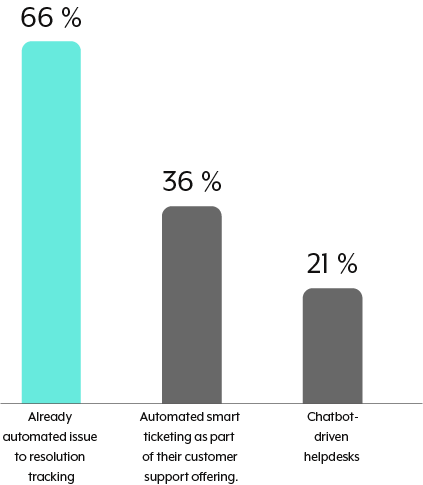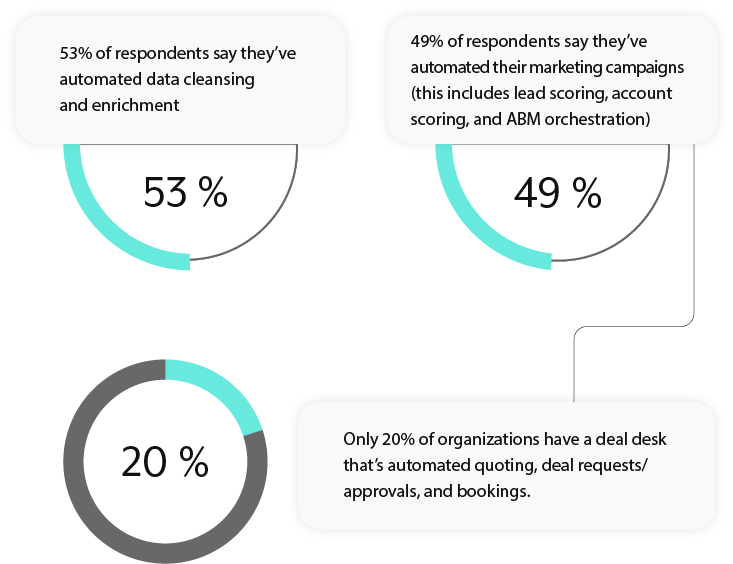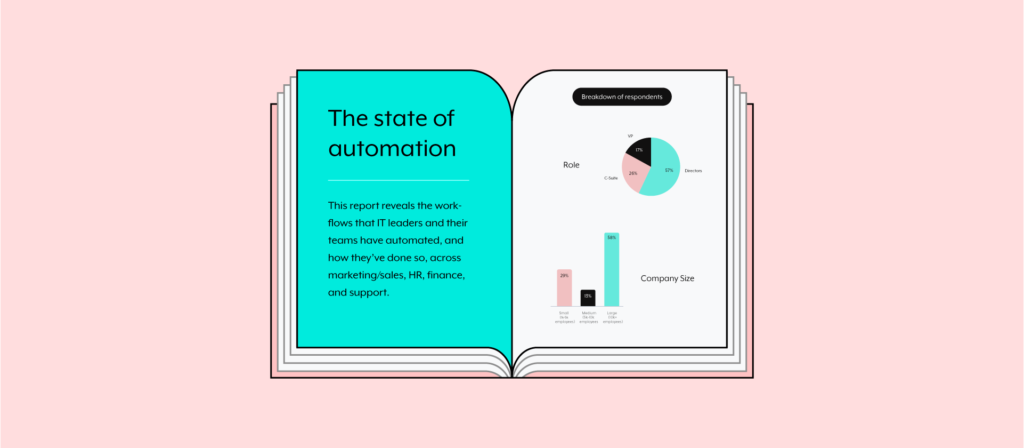The process of benchmarking your automation activities allows you to identify where your strengths and opportunities lie.
These insights can lead you to double down on automations that give your organization an edge, either as an employer or as a vendor; and they can inspire you to pursue new automations that address critical needs.
To help you benchmark your efforts, we partnered with Pulse—an insights platform that hosts thousands of technology decision makers—to survey 100 IT leaders who work at companies with 1,000 or more employees. The survey asked these leaders about the automations they’re building, how they’re building them, and a whole lot more.
To see all of our key findings, you can download the full report. You can also keep reading to get a sense of what we uncovered.
More than half of organizations automate key candidate and employee workflows
Automation can benefit your HR-related processes in a number of ways:
- Recruiters can streamline resume screening, allowing them to identify and focus on the most qualified candidates more easily
- Employees can submit candidate referrals within their business communications platform, enabling your organization to scale its pool of candidates
- Employees can request time off without leaving their business communications platform, and approvers can also review and accept (or reject) these requests within the platform—providing both parties with a convenient and simple experience
Given the value each of these automations provide, it’s perhaps little surprise that many organizations have already implemented them.
More than half (56%) of IT leaders say that their organization has automated the PTO request and approval process, while nearly the same share (55%) say they’ve streamlined their recruitment processes.

Organizations, however, might not be implementing these candidate and employee-focused automations effectively.
Nearly two thirds of respondents (63%) said that they’re implementing the automations via out-of-the-box integrations, and while this approach has clear benefits, like affordability, it likely falls short of your business needs.
That’s because out-of-the-box—or native—integrations, only allow you to connect with a few apps—when you likely need them to connect with several; moreover, native integrations likely can’t meet your specific business requirements over time, forcing you to build the integrations in-house (an approach that comes with its own set of issues).
Organizations have yet to fully embrace a chatbot-driven helpdesk
A chatbot can help your employees perform a variety of day-to-day tasks from the comfort of their business communications platform.
This includes the following, and much more:
- Submitting or approving requests, whether it’s related to PTO, an expense, or access to an app
- Asking questions (and getting answers in real time)
- Working on support tickets in your ITSM tool
Despite all the ways that a chatbot can automate your helpdesk, most organizations haven’t followed through on using one: Just 21% of IT executives say they utilize a chatbot-driven helpdesk, a figure that’s substantially lower than other support-related automations.

Few organizations have automated workflows in their deal desk
Automation can all but ensure that everyone in your deal desk collaborates effectively.
It enables both sales reps to make requests and approvers to review and accept—or reject—any from their business comms platform. It can also help reps edit their sales opportunities without leaving their business comms platform, motivating them to do so more frequently, which, in turn, allows everyone to access more accurate data.
Yet, only 1 in 5 organizations have used automations to improve their deal desk. This pales in comparison to the number of organizations that have automated other areas within marketing and sales, like data cleansing and enrichment (53%) and marketing campaigns (49%).

Related: A guide to automating your deal desk
These insights only scratch the surface. You can learn more about the automations that are gaining widespread adoption, uncover those being ignored, and see how many get implemented by downloading the full report!
